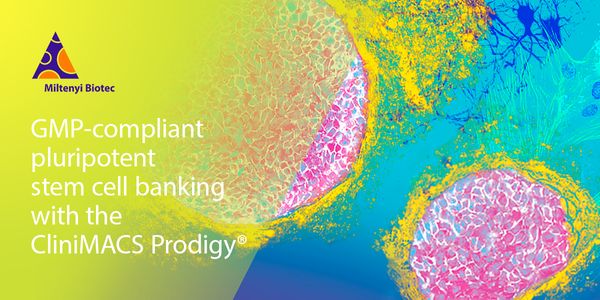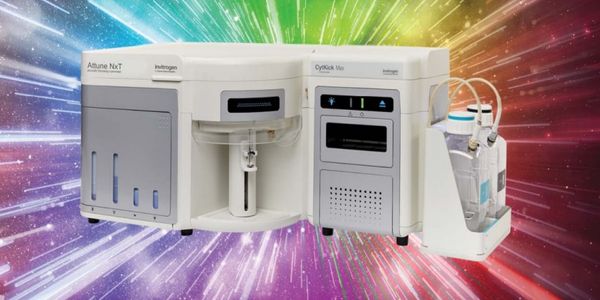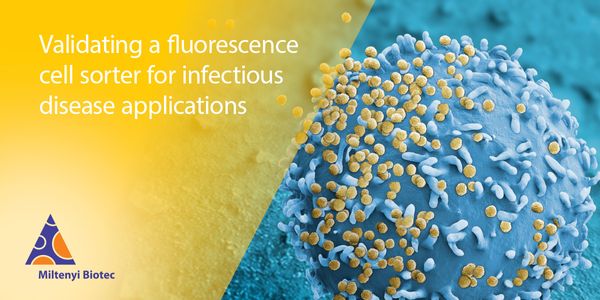Human development
Human development describes the stages of human life. Human development consists of 5 stages. Infancy (up to one year), toddler (age 1 - 5), childhood (age 3 - 11), adolescence (age 12 - 18), and adulthood. The study of human development aims to understand how people grow, develop, and change throughout their life.
-
SEP 09, 2021 | 8:00 AMDate: September 09, 2021 Time: 8:00am (PDT), 11:00am (EDT) Human pluripotent stem cells (PSCs) hold great potentials in regenerative therapies. In this webinar, Chao will first present the c...SEP 09, 2021 | 12:00 AMMicrobiome sequencing data are known to be biased; the measured taxa relative abundances can be systematically distorted from their true values at every step in the experimental/analysis wor...SEP 09, 2021 | 12:00 AMAnalysis of community wastewater has been shown to be an effective method for tracking the prevalence of SARS-COV-2. Our group has developed techniques for sequencing a portion of the SARS-C...SEP 09, 2021 | 12:00 AMExisting methods for antibiotic selection are based on outdated and inaccurate microbiological principles, causing millions of inappropriate antibiotic selections and hundreds of thousands o...SEP 09, 2021 | 12:00 AMEarly detection is critical for prompt and effective treatment of acute infectious diseases. For tick-borne diseases (TBD), the lack of accurate early diagnosis can result in delayed treatme...SEP 08, 2021 | 10:30 AMVaricella zoster virus (VZV) causes two clinically distinct forms of disease, varicella and herpes zoster. These forms can each present with multiple manifestations ranging from lesions incl...Speaker: Jon Armstrong, MScSEP 08, 2021 | 9:00 AMDate: September 8, 2021 Time: 9:00am (PDT), 12:00pm (EDT) Implanted biomedical devices comprise a major component of modern medicine and are essential for many clinical applications ranging...SEP 08, 2021 | 7:30 AMMicrobes are recently recognized as driving the energy and nutrient transformations that fuel Earth’s ecosystems in soils, oceans and humans. Where studied, viruses appear to modulate...SEP 08, 2021 | 12:00 AMThe Human Microbiome Project was conceived almost 15 years ago, as an extension of the Human Genome Project, to explore the diversity of human-associated microorganisms at multiple body site...SEP 08, 2021 | 12:00 AMInfluenza viruses represent a significant burden to human health. In order to limit respiratory viral disease, new approaches that can prevent viral infection and spread are needed. We have...SEP 08, 2021 | 12:00 AMGenetic Molecular Surveillance is a key component of a modern public health toolkit. This talk will detail the molecular microbial make up of urban environments. It will discuss how these en...SEP 08, 2021 | 12:00 AMSelf-amplifying RNA replicons are promising candidates for next generation vaccines against human coronaviruses with pandemic potential. Self-amplification of RNAs in host cells generates mo...SEP 08, 2021 | 12:00 AMThe ongoing COVID-19 pandemic has increased awareness about sex-specific differences in immunity and outcomes following respiratory virus infections. Strong evidence of a male bias in COVID-...SEP 07, 2021 | 9:00 AMInnate and adaptive immunity mechanisms provide antiviral protection in mammals. In this talk, I shall present recent findings from my lab and collaborators revealing a distinct form of mamm...SEP 07, 2021 | 12:00 AMFlaviviruses are pathogens of global public health concern. They include dengue virus (DENV), West Nile virus (WNV), and zika virus (ZIKV). There are no approved US Food and Drug Administrat...SEP 07, 2021 | 12:00 AMFlaviviruses are pathogens of global public health concern. They include dengue virus (DENV), West Nile virus (WNV), and zika virus (ZIKV). There are no approved US Food and Drug Administrat...AUG 31, 2021 | 8:00 AMDate: August 31, 2021 Time: 8:00am (PDT), 11:00am (EDT) Given its ability to isolate pathogens, nuclei, and immune cells for downstream applications, cell sorting is an essential tool for im...Speaker: Kaitlin Didier , Megan Varnado , Marissa Fahlberg , Matt Riddle , Elane Reyes-AvilesSponsored By: Miltenyi BiotecAUG 26, 2021 | 8:00 AMDate: August 26, 2021 Time: 8:00am (PDT), 11:00am (EDT) My translational research program focuses on approaches to enhance the natural killer (NK) cell response to cancer, with an emphasis o...AUG 25, 2021 | 1:30 PMIn this preliminary experiment, we used spatial transcriptomics to assess the gene expression profiles of microglia or astrocytes in relation to their distance from plaques. We compared 18-m...Speaker: Frances Edwards, PhDAUG 25, 2021 | 1:30 PMTechnological advances such as single-cell RNA sequencing accelerated our understanding of cellular diversity in tissues. However, the ability to elucidate this cellular heterogeneity while...Speaker: Jeroen Aerts, PhDAUG 25, 2021 | 10:30 AMIn 1910, Harrison published the first report of frog embryonic sympathetic ganglia grown in hanging drops of lymph for a few days, where single neurons extended nerve fibers with complex gro...Speaker: Erna van Niekerk, Ph.D.AUG 25, 2021 | 9:00 AMThe increasing burden of neurological disorders as our population ages, together with the high personal and societal costs of mental and substance use disorders, underscores the need for new...Speaker: John J. Ngai, PhD , Mohammad M. Ghassemi, PhD , Susan Wright, PhD , Grace Peng, PhD , Hsiao Yu (Christina) Fang, PhD , James Gnadt, PhDPresented at: Neuroscience Virtual Event Series 2021
AUG 25, 2021 | 7:30 AMThe misfolding of intrinsically disordered proteins (IDPs) such as tau and α-synuclein (αSyn) has been associated with the on-set and progression of Alzheimer’s (AD) and Pa...AUG 25, 2021 | 12:00 AMDrawing from the latest research and intervention practices, this presentation will address overcoming burn-out, compassion fatigue and vicarious trauma generally, and specifically as relate...
SEP 09, 2021 | 8:00 AM
Date: September 09, 2021 Time: 8:00am (PDT), 11:00am (EDT) Human pluripotent stem cells (PSCs) hold great potentials in regenerative therapies. In this webinar, Chao will first present the c...
SEP 09, 2021 | 12:00 AM
Microbiome sequencing data are known to be biased; the measured taxa relative abundances can be systematically distorted from their true values at every step in the experimental/analysis wor...
SEP 09, 2021 | 12:00 AM
Analysis of community wastewater has been shown to be an effective method for tracking the prevalence of SARS-COV-2. Our group has developed techniques for sequencing a portion of the SARS-C...
SEP 09, 2021 | 12:00 AM
Existing methods for antibiotic selection are based on outdated and inaccurate microbiological principles, causing millions of inappropriate antibiotic selections and hundreds of thousands o...
SEP 09, 2021 | 12:00 AM
Early detection is critical for prompt and effective treatment of acute infectious diseases. For tick-borne diseases (TBD), the lack of accurate early diagnosis can result in delayed treatme...
SEP 08, 2021 | 10:30 AM
Varicella zoster virus (VZV) causes two clinically distinct forms of disease, varicella and herpes zoster. These forms can each present with multiple manifestations ranging from lesions incl...
Speaker:
Jon Armstrong, MSc
SEP 08, 2021 | 9:00 AM
Date: September 8, 2021 Time: 9:00am (PDT), 12:00pm (EDT) Implanted biomedical devices comprise a major component of modern medicine and are essential for many clinical applications ranging...
SEP 08, 2021 | 7:30 AM
Microbes are recently recognized as driving the energy and nutrient transformations that fuel Earth’s ecosystems in soils, oceans and humans. Where studied, viruses appear to modulate...
SEP 08, 2021 | 12:00 AM
The Human Microbiome Project was conceived almost 15 years ago, as an extension of the Human Genome Project, to explore the diversity of human-associated microorganisms at multiple body site...
SEP 08, 2021 | 12:00 AM
Influenza viruses represent a significant burden to human health. In order to limit respiratory viral disease, new approaches that can prevent viral infection and spread are needed. We have...
SEP 08, 2021 | 12:00 AM
Genetic Molecular Surveillance is a key component of a modern public health toolkit. This talk will detail the molecular microbial make up of urban environments. It will discuss how these en...
SEP 08, 2021 | 12:00 AM
Self-amplifying RNA replicons are promising candidates for next generation vaccines against human coronaviruses with pandemic potential. Self-amplification of RNAs in host cells generates mo...
SEP 08, 2021 | 12:00 AM
The ongoing COVID-19 pandemic has increased awareness about sex-specific differences in immunity and outcomes following respiratory virus infections. Strong evidence of a male bias in COVID-...
SEP 07, 2021 | 9:00 AM
Innate and adaptive immunity mechanisms provide antiviral protection in mammals. In this talk, I shall present recent findings from my lab and collaborators revealing a distinct form of mamm...
SEP 07, 2021 | 12:00 AM
Flaviviruses are pathogens of global public health concern. They include dengue virus (DENV), West Nile virus (WNV), and zika virus (ZIKV). There are no approved US Food and Drug Administrat...
SEP 07, 2021 | 12:00 AM
Flaviviruses are pathogens of global public health concern. They include dengue virus (DENV), West Nile virus (WNV), and zika virus (ZIKV). There are no approved US Food and Drug Administrat...
AUG 31, 2021 | 8:00 AM
Date: August 31, 2021 Time: 8:00am (PDT), 11:00am (EDT) Given its ability to isolate pathogens, nuclei, and immune cells for downstream applications, cell sorting is an essential tool for im...
Speaker:
Kaitlin Didier
, Megan Varnado
, Marissa Fahlberg
, Matt Riddle
, Elane Reyes-Aviles
Sponsored By: Miltenyi Biotec
AUG 26, 2021 | 8:00 AM
Date: August 26, 2021 Time: 8:00am (PDT), 11:00am (EDT) My translational research program focuses on approaches to enhance the natural killer (NK) cell response to cancer, with an emphasis o...
AUG 25, 2021 | 1:30 PM
In this preliminary experiment, we used spatial transcriptomics to assess the gene expression profiles of microglia or astrocytes in relation to their distance from plaques. We compared 18-m...
Speaker:
Frances Edwards, PhD
AUG 25, 2021 | 1:30 PM
Technological advances such as single-cell RNA sequencing accelerated our understanding of cellular diversity in tissues. However, the ability to elucidate this cellular heterogeneity while...
Speaker:
Jeroen Aerts, PhD
AUG 25, 2021 | 10:30 AM
In 1910, Harrison published the first report of frog embryonic sympathetic ganglia grown in hanging drops of lymph for a few days, where single neurons extended nerve fibers with complex gro...
Speaker:
Erna van Niekerk, Ph.D.
AUG 25, 2021 | 9:00 AM
The increasing burden of neurological disorders as our population ages, together with the high personal and societal costs of mental and substance use disorders, underscores the need for new...
Speaker:
John J. Ngai, PhD
, Mohammad M. Ghassemi, PhD
, Susan Wright, PhD
, Grace Peng, PhD
, Hsiao Yu (Christina) Fang, PhD
, James Gnadt, PhD
Presented at: Neuroscience Virtual Event Series 2021
AUG 25, 2021 | 7:30 AM
The misfolding of intrinsically disordered proteins (IDPs) such as tau and α-synuclein (αSyn) has been associated with the on-set and progression of Alzheimer’s (AD) and Pa...
AUG 25, 2021 | 12:00 AM
Drawing from the latest research and intervention practices, this presentation will address overcoming burn-out, compassion fatigue and vicarious trauma generally, and specifically as relate...
























